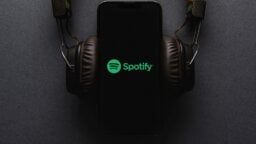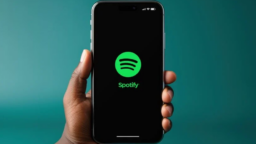Spotify is getting serious about podcast advertising.
Last July, we asked if podcasts can help the company to scale its ad business and if so, how?
At the time, we forecast, based on a clue given to MBW in October 2018 by Brian Benedik, Spotify’s former VP, Global Head of Advertising Sales, that a “scalable digital ad insertion” solution for podcasts could be the next step in the company’s podcast advertising strategy.
As stated last summer, the implementation of such a tool could be achieved by simply buying it – remember, Spotify earmarked a $400-$500m spend on acquisitions last year – or, by creating it in house, and MBW spotted a couple of job ads that hinted that the company was working on something along these lines.
Today, we learn that the company has opted for the latter.
Spotify has launched what it calls ‘Streaming Ad Insertion (SAI)’, a new proprietary podcast ad technology that powers Spotify Podcast Ads.
The implementation of this tech is a big leap for Spotify. In October 2018, Benedik told MBW that advertising in its original podcasts in the form of ‘host reads’ – i.e. advertising copy read out by the podcast hosts – was Spotify’s “main podcast ad driver right now”.
Spotify says that its new SAI tech ‘leverages streaming to deliver Spotify’s full digital suite of planning, reporting, and measurement capabilities for Spotify original and exclusive podcasts’.
What this means is that Spotify can provide advertisers with data such as actual ad impression, frequency (number of times a listener heard the ad), reach and anonymized audience insights (age, gender, device type).
According to Spotify, this is the first time this type of data is being made available for advertisers and podcast creators.
The company says that footwear brand Puma was among its first partners to test SAI and states that ‘the results were major’.
Puma, says SPOT, ran host-read ads during the Spotify Original podcast, Jemele Hill Is Unbothered, and the ads resulted in ad recall lift by +180%.
Spotify reported that in Q3 2019 (the three months to end of September), podcasts were consumed by 14% of its 248 million Monthly Active Users [MAUs] (approximately 35 million people).
Total podcasting listening hours on the platform were up by 39% quarter-on-quarter.
“As audio and podcast consumption increases at staggering rates — on Spotify — podcast consumption increased 39% from Q2 to Q3 last year,” said the company, in today’s press release.
It added: “And ad dollars follow — Spotify is leading the charge to unlock the potential of this uniquely powerful and intimate advertising medium.”
‘Ad dollars’ from the entire podcast market were estimated to have grown 53% in 2018 to around $479.1 million according to a recent report from the Interactive Advertising Bureau (IAB) and PwC.
That figure is estimated to top $678.7m by the end of 2019 and $1 billion by 2021.
Meanwhile, Spotify’s own advertising revenue has, historically, not contributed a sizeable chunk towards its total revenue.
“With this technology, we are offering the intimacy, quality and efficacy of traditional podcast ads with the precision and transparency of modern-day digital marketing.”
Spotify
In Q1 2019, Spotify’s quarterly ad-supported revenue was €126m – up 24% YoY, but substantially down on the €175m generated in the previous quarter (which represented just 11.7% of its total revenue in those three months.)
But with podcast advertising revenue soaring and Spotify betting big on podcasts, not only in the form of multi-million dollar acquisitions but with the development of proprietary advertising tech like SAI, the company is clearly hoping it will be see an advertising revenue boom in the not-too-distant future.
Will this mean more money for artists and record labels though? Probably not.
Last month, MBW wrote about how podcasts are damaging the potential growth of the recorded music business, which you can read in full here.
“With this technology, we are offering the intimacy, quality and efficacy of traditional podcast ads with the precision and transparency of modern-day digital marketing,” said Spotify.
“In short, we’re keeping what podcast listeners, creators, and advertisers love about podcast ads and making the medium addressable for digital advertisers.”Music Business Worldwide




